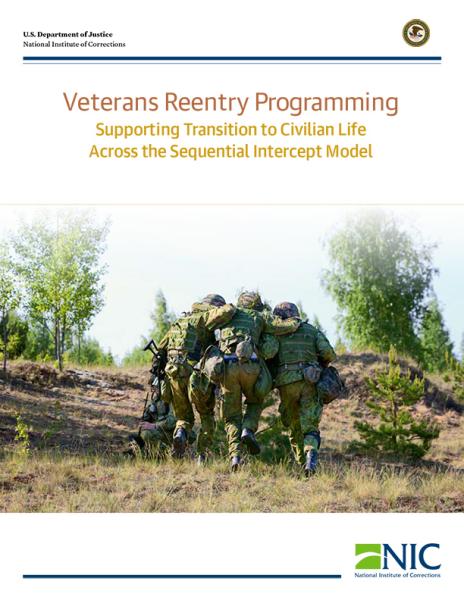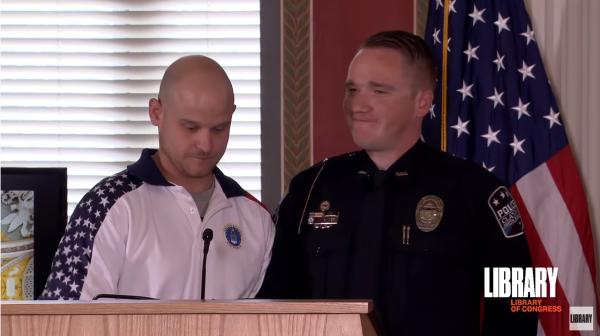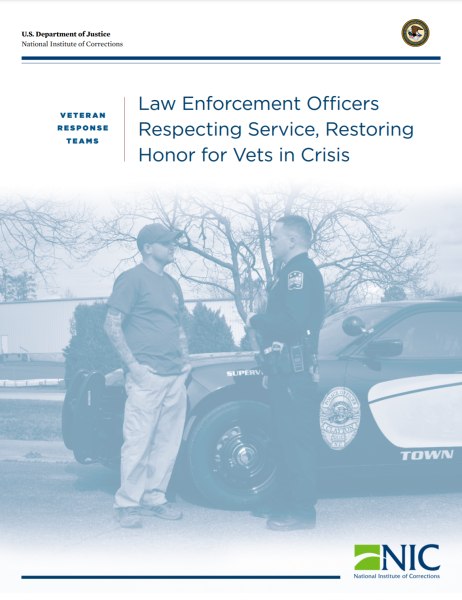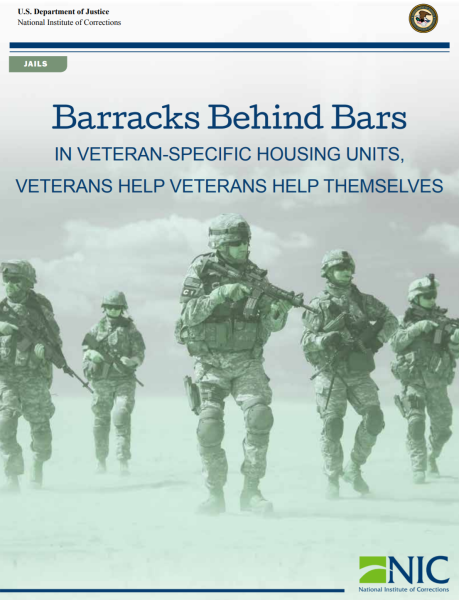Justice Involved Veterans
JIV Publications
This white paper is a collaboration between the National Institute of Corrections, the Substance Abuse and Mental Health Services Administration, the U.S. Department of Veterans Affairs, and the National Institute of Corrections-sponsored Justice-Involved Veterans Network. This effort reflects the original Sequential Intercept Model (SIM) that was developed in the early 2000s by Mark Munetz, MD, and Patricia A. Griffin, PhD, along with Henry J. Steadman, PhD, of Policy Research Associates, Inc. The original intent of the Sequential Intercept Model was to “envision a series of ‘points of interception’ or opportunities for an intervention to prevent individuals with mental illness from entering or penetrating deeper into the criminal justice system” (Munetz & Griffin, 2006). The current project builds on prior efforts to adapt (as V-SIM) the original SIM to the justice-involved veterans population challenged by various forms and degrees of mental illness, as well as by substance abuse, and by the trauma from physical injuries (with psychological trauma-overlapping Traumatic Brain Injury of particular note). Each decision point in the criminal justice system represents an opportunity to intercede at the lowest level possible and to minimize the collateral consequences of a veteran getting more deeply involved in the justice system.
They were veterans before they were incarcerated individuals. That is the sentiment and approach to veterans reentry of Sharon Kirkpatrick, member of the Washington Women Veterans Advisory Committee. Upon meeting with a veteran for the first time, she begins by acknowledging their military service, both because she honors their sacrifice and because the veterans need to hear and embrace these words for themselves. Helping veterans understand that they are more than their criminal charge is the first step to helping them see beyond their current circumstances and guiding them along the path of reentry.
Barracks Behind Bars II introduces several of the facilities and the men and women whose vision is paying off with facility reports of fewer behavioral problems and almost no incidents of violence by incarcerated veterans. This translates into a less stressful, safer environment for correctional personnel and facilitates opportunities for assistance from the Health Care for Reentry Veterans Specialists of the U.S. Department of Veterans Affairs, personnel from state and county departments, and volunteers from community and veterans organizations.
In collaboration with the Library of Congress, the National Institute of Corrections hosted a live panel on May 15, 2019. Listen to the panel of experts as they discuss the formation of Veterans Response Teams: law enforcement professionals trained to respond to situations involving veterans in crisis. Learn how cities across America have saved lives, minimized hostile situations, and gotten vets with PTSD the treatment they need by implementing these teams. Moderated by Jonathan Elias, from WJLA-TV in Washington, D.C.
Many veterans return home from deployments to a combat zone with Post-Traumatic Stress Disorder or other mental health issues. They may feel isolated, lonely, or misunderstood. Separated from the military "family" with whom they served, they carry the burden of their service alone, and some struggle with how to cope with their feelings. Some self-medicate or act out to ease their pain, and some find themselves involved in the criminal justice system.
Barracks Behind Bars illuminates the increasing number of veteran-specific housing unit programs in jails across the country that are working to prevent recidivism and improve the safety of the public as well as sheriffs' deputies, state corrections officers, and inmates by reigniting a sense of military culture and values.
This white paper makes the case for therapeutic justice with the observations, recollections, and reflections of men and women who are on the front lines of the criminal justice system in their respective counties and cities. It is our hope that you who are reading this paper will have gleaned some nuggets of knowledge that will assist you in some ways to understand the emotional and mental tally and toll on men and women exposed to the ravages of combat, and the righteousness of these treatment courts to assuage the hurts of these veterans and make their families whole again and our communities safer









